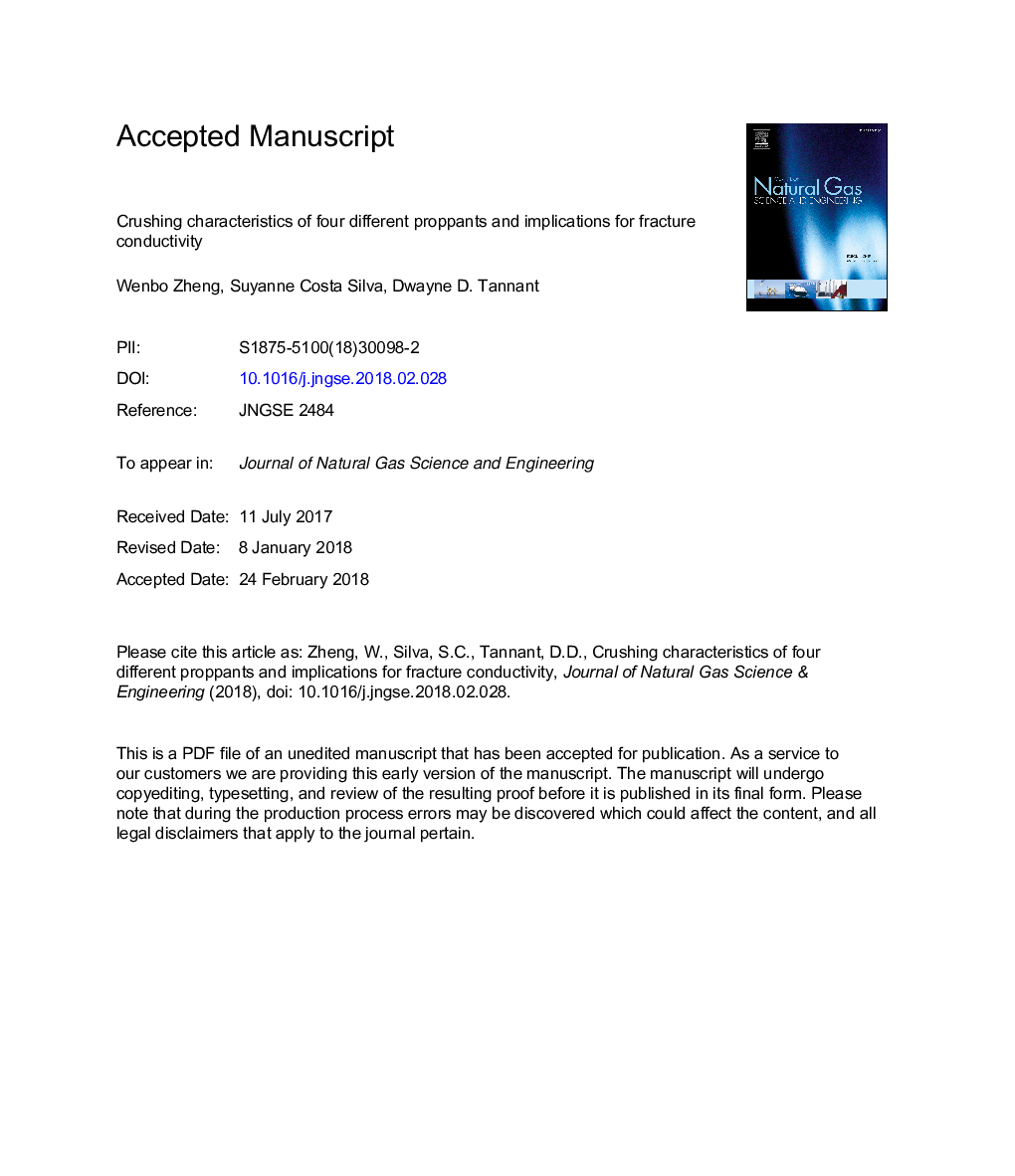| Article ID | Journal | Published Year | Pages | File Type |
|---|---|---|---|---|
| 8128150 | Journal of Natural Gas Science and Engineering | 2018 | 45 Pages |
Abstract
Proppants are widely used during hydraulic fracturing in the oil and gas industry. This paper compares the crushing characteristics of four different types of proppant with three different size ranges that are widely used for hydraulic fracturing in North America. The proppant properties were evaluated using data obtained from a modified crush test. The grain shape before the test, the grain breakage pattern, the stress-strain response of the proppant pack, and the change in particle-size distribution caused by compressive stresses of up to 40â¯MPa were measured. At the higher compressive stresses, significant differences were observed between the various proppant types as well as for different size ranges for a given proppant type. The results show that the constrained moduli of resin-coated sand and ceramic proppant are 30% higher than those for Jordan sand and Genoa sand. Genoa sand exhibits more grain crushing than Jordan sand, while resin-coated sand and ceramic proppant experienced only minor fracturing at compressive stresses of 40â¯MPa. The grain shape and size distribution measurements were used to empirically estimate and compare the permeability and fracture conductivity for different proppant packs. Mesh 20/40 and 30/50 ceramic proppants, and mesh 20/40 resin-coated sand are predicted to have twice the permeability of the other proppants at 40â¯MPa. A good agreement was found between the estimated permeability and published laboratory results for fracture conductivity. This indicates that careful characterization of the particles obtained from a crush test can provide a fast and reliable approach for evaluating proppant pack permeability and fracture conductivity as well as changes in these properties under different compressive stresses without the need to conduct elaborate conductivity tests. Empirical equations quantifying permeability change for four types of proppant with three different sizes are derived with the effect of proppant embedment on fracture conductivity considered. These equations can be incorporated into hydrocarbon production simulations to select proppant types and sizes.
Related Topics
Physical Sciences and Engineering
Earth and Planetary Sciences
Earth and Planetary Sciences (General)
Authors
Wenbo Zheng, Suyanne Costa Silva, Dwayne D. Tannant,
